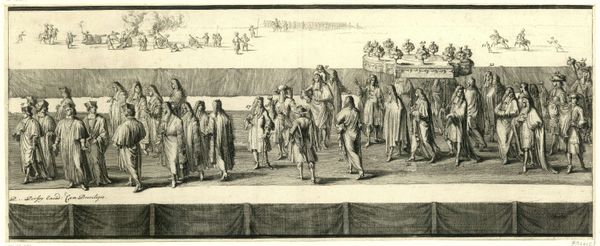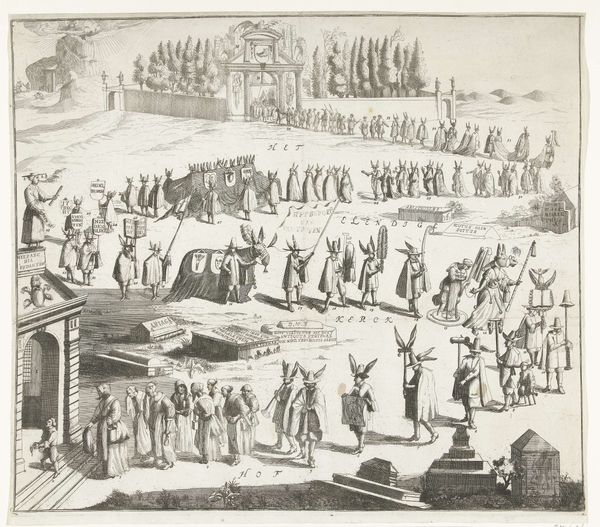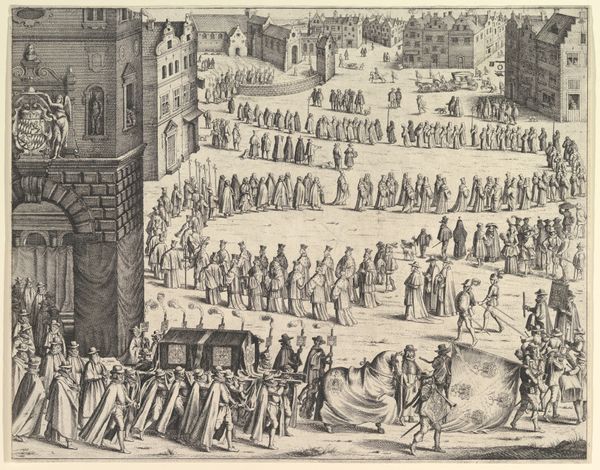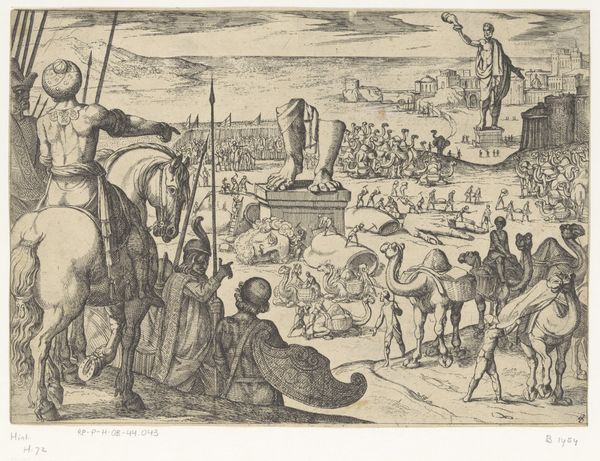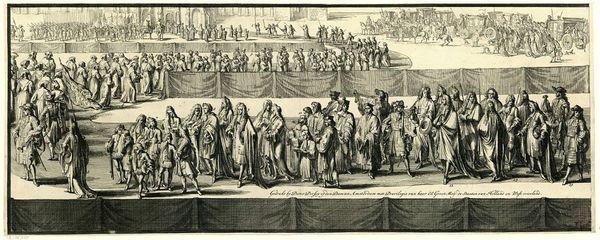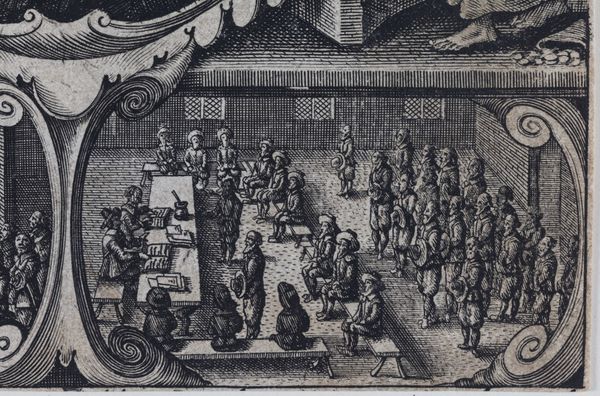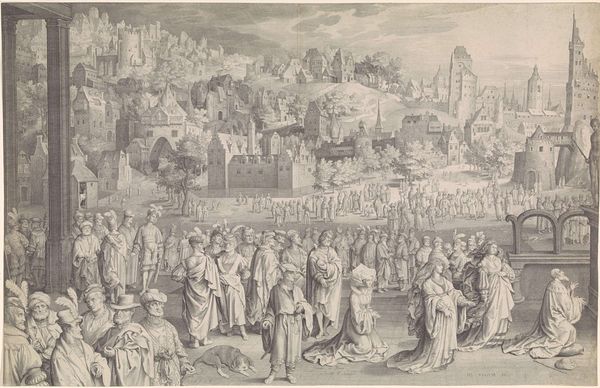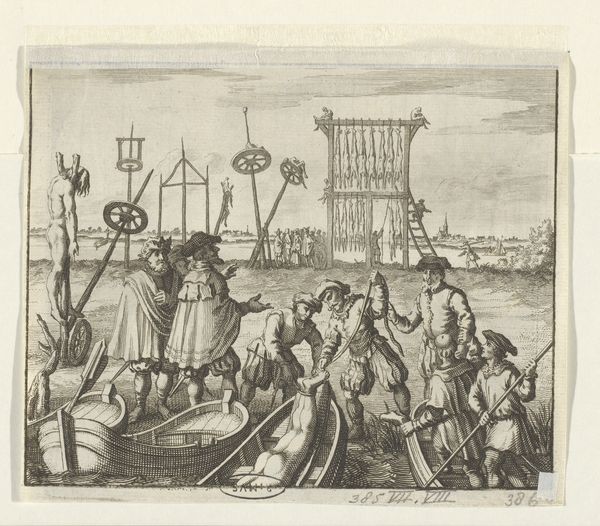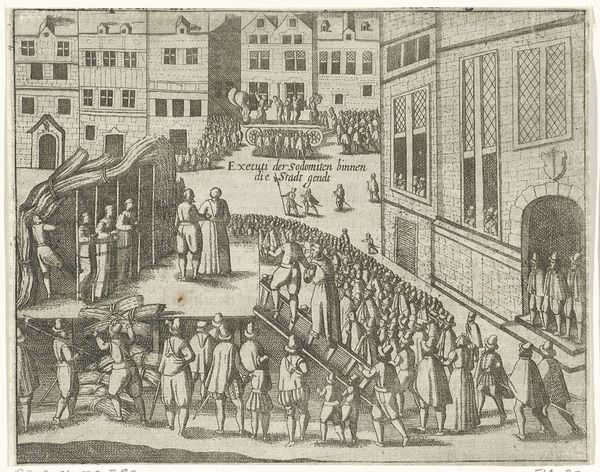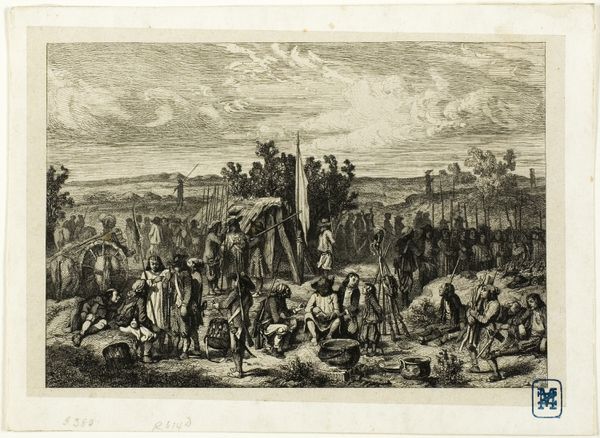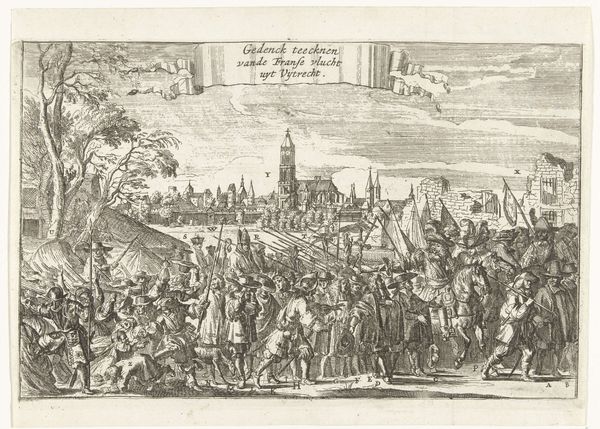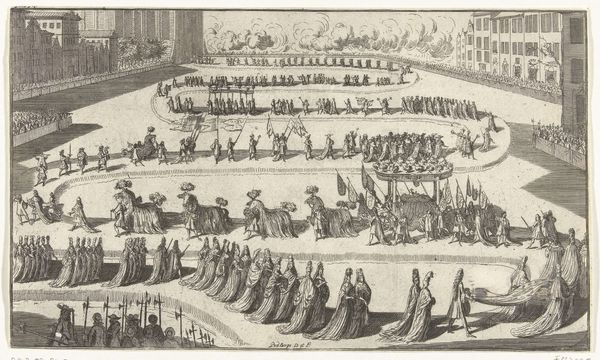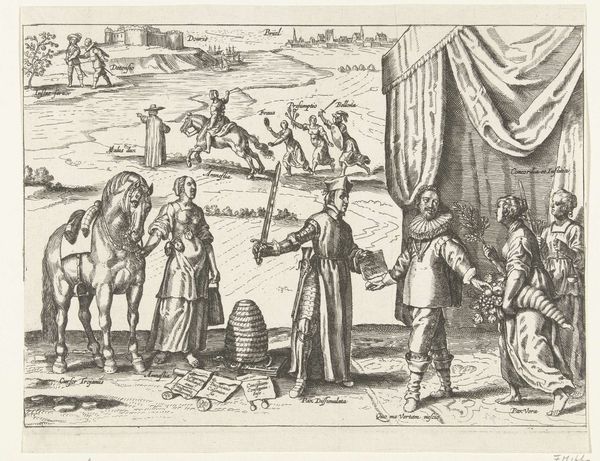
drawing, print, ink, engraving
#
drawing
#
baroque
# print
#
old engraving style
#
landscape
#
ink
#
cityscape
#
history-painting
#
engraving
Dimensions: height 147 mm, width 265 mm
Copyright: Rijks Museum: Open Domain
Curator: Here we have a fascinating print: "The Procession of the French in Utrecht, 1672," created anonymously between 1672 and 1674. It’s a rather detailed engraving. Editor: My first impression is how the high-contrast line work really draws the eye across the whole composition, yet somehow leaves a feeling of stark… displacement. It’s quite a formal rendering, though! Curator: Displacement, yes, fitting for a historical document showing a conquering force occupying a city. Note how the artist used varying densities of line to articulate depth and create a sense of receding space, particularly in the crowd. Semiotically, the cobblestones direct the viewer's gaze toward the invading military presence. Editor: Indeed. The image pulses with visual symbolism—the religious banners held high, the bowing figures, and the French soldiers with their elaborate weaponry… These elements converge to underscore French dominance. What do you make of the men sweeping the ground? Is this some gesture of imposed subservience? Curator: Precisely. This act becomes a formal device underscoring power relations within the representational space of the engraving itself, through the contrast of movement of the broom to the erect spears and vertical composition that is on display elsewhere in the artwork.. It reminds one of classic landscape composition with high and low points that mark formal emphasis. Editor: And how the building to the right nearly eclipses the religious parade! Almost like they have claimed it. Considering cultural memory, this procession becomes a powerful symbol of a subjugated Utrecht, forever imprinted in visual form, in this case a moment in the Franco-Dutch War. It is also clearly of a moment, considering how quickly clothing changed during this era. Curator: Certainly, and even today it reminds the viewer of that subjugated history of Utrecht through its baroque aesthetic and visual impact; notice how the light-dark shading models depth throughout the image. The interplay emphasizes key visual symbols and underscores its ideological intention. Editor: Ultimately, it’s a disquieting record – that's captured not just the event, but its lasting symbolic significance on our modern understanding of conquest, as well as Baroque-era values of the day.. Curator: I agree. The composition remains compelling for what it says about history, its structure, its lines and shading—offering continuous opportunities for engagement.
Comments
No comments
Be the first to comment and join the conversation on the ultimate creative platform.
